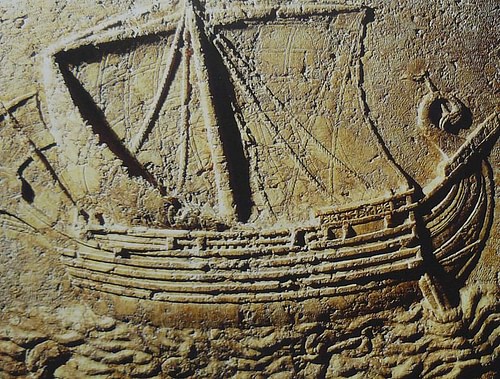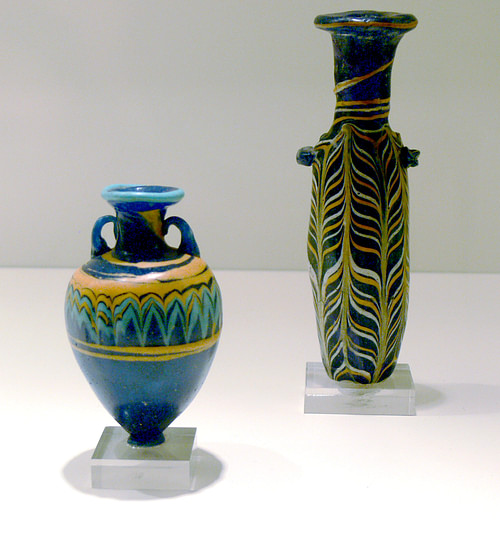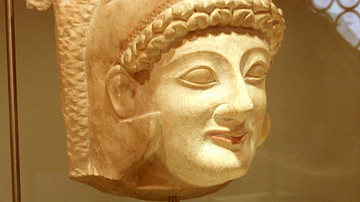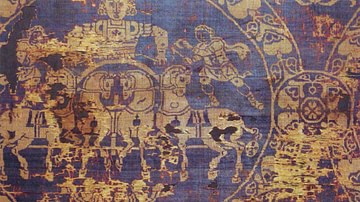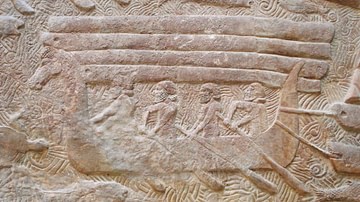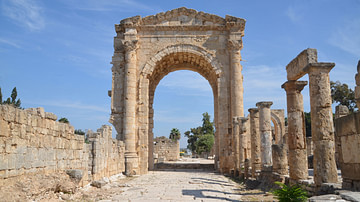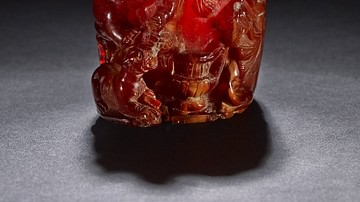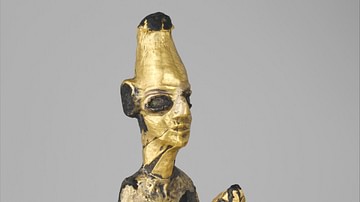The Phoenicians, based on a narrow coastal strip of the Levant, put their excellent seafaring skills to good use and created a network of colonies and trade centres across the ancient Mediterranean. Their major trade routes were by sea to the Greek islands, across southern Europe, down the Atlantic coast of Africa, and up to ancient Britain. In addition, Arabia and India were reached via the Red Sea, and vast areas of Western Asia were connected to the homeland via land routes where goods were transported by caravan. By the 9th century BCE, the Phoenicians had established themselves as one of the greatest trading powers in the ancient world.
Geographical Extent
Trade and the search for valuable commodities necessitated the establishment of permanent trading posts and, as the Phoenician ships generally sailed close to the coast and only in daytime, regular way-stations too. These outposts became more firmly established in order to control the trade in specific commodities available at that specific site. In time, these developed further to become full colonies so that a permanent Phoenician influence eventually extended around the whole coastline of the ancient Mediterranean and the Red Sea. Their broad-bottomed single-sail cargo ships transported goods from Lebanon to the Atlantic coast of Africa, Britain, and even the Canary Islands, and brought goods back in the opposite direction, stopping at trade centres anywhere else between. Nor was trade restricted to sea routes as Phoenician caravans also operated throughout Western Asia tapping into well-established trading zones such as Mesopotamia and India.
Phoenician sea trade can, therefore, be divided into that for its colonies and that with fellow trading civilizations. Consequently, the Phoenicians not only imported what they needed and exported what they themselves cultivated and manufactured but they could also act as middlemen traders transporting goods such as papyrus, textiles, metals, and spices between the many civilizations with whom they had contact. They could thus make enormous gains by selling a commodity with a low value such as oil or pottery for another such as tin or silver which was not itself valued by its producers but could fetch enormous prices elsewhere. Trading Phoenicians appear in all manner of ancient sources, from Mesopotamian reliefs to the works of Homer and Herodotus, from Egyptian tomb art to the Book of Ezekiel in the Bible. The Phoenicians were the equivalent of the international haulage trucks of today, and just as ubiquitous.
Methods of Exchange
As with many other ancient civilizations the Phoenicians traded goods using a variety of methods. Prestige goods could be exchanged as reciprocal gifts but these could be more than mutual tokens of goodwill as, by bestowing on the receiver an obligation, they were a method to initiate trade partnerships. Luxury goods given as gifts may also have been a deliberate attempt by the Phoenicians to create a demand for more such items and help the Phoenicians acquire the local resources they coveted.
Goods could be collected as a form of tribute in return for military protection or under compulsion. These were then stored in large quantities and then redistributed either locally or traded elsewhere. Goods could be bartered for and exchanged in kind on the spot. Alternatively, and perhaps the most common method employed by the Phoenicians, goods could be bought or sold in a relatively controlled manner where quantities and prices were fixed beforehand through the drawing up of trade agreements and treaties controlled by the state. The exchange value of goods was, therefore, fixed and so coinage was unnecessary, which is not to say there was no system of written arbitrary values and credit arrangements. The Phoenicians may not have produced coinage precisely because their trade was truly international and they had no use for coins which could not be used far from the place of their mint.
Completely free trade where prices fluctuate due to supply and demand is a mechanism thought by some historians not to have been in operation prior to the 4th century BCE but the view is much debated amongst scholars. Phoenician trade was likely, then, carried out by state officials working on commission but also by consortiums of traders closely associated with royal households. These latter would have been high-ranking nobles, as described in Isaiah 23:8, "Tyre, the crowning city, whose merchants are princes, whose traffickers are the honourable of the earth." Perhaps from around the 8th century BCE the quantity of trade carried out by private merchants increased and the direct intervention of the state was reduced, again, the point is still subject to academic debate. The trading of goods most often took place in state-sanctioned trade centres which were generally recognised as neutral by the different regional states. The Phoenician city of Tyre is a classic example.
Exported Goods - Wood
Phoenicia was a mere coastal strip backed by mountains. Despite the paucity of land available they did manage to produce cereals through irrigation of the arable terrain and cultivate on a limited scale such foodstuffs as olives, figs, dates, walnuts, almonds, pomegranates, plums, apricots, melons, pumpkins, cucumbers, and wine. However, the Phoenicians were most noted as exporters of wood. This commodity came from their abundant cedar and fir forests and had been traded since the beginning of recorded history. The cedar is a tall tree with a thick girth, making it ideal for timber. It also has the additional benefit of possessing an aromatic odour. Mesopotamia and Egypt were the most notable customers, the former receiving their trunks via caravan up to the Euphrates River while ships carried the wood to the African coast. The trade is recorded in reliefs of Sargon II and an inscription of Nebuchadnezzar. According to the historian George Rawlinson, Phoenician cedar wood was used by King Solomon for his celebrated temple, by Herod in Zerubbabel's Temple, and by the Ephesians for the roof of the Temple of Artemis at Ephesus, one of the Seven Wonders of the Ancient World.
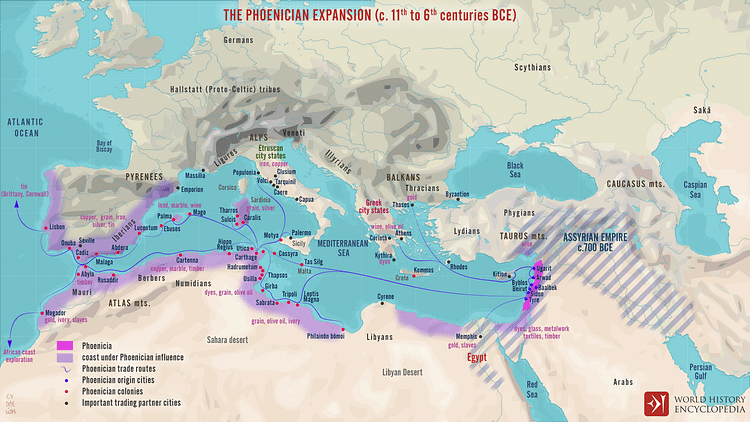
Textiles
The other famous Phoenician export was textiles which used wool, linen yarn, cotton, and later, silk. Wool (sheep and goat) probably dominated and came from Damascus and Arabia. Linen yarn was imported from Egypt while silk came from Persia. Taking these raw materials, the Phoenicians transformed them into uniquely colourful items, especially clothes and carpets. Fine multi-coloured clothing from Phoenicia is referenced both in Homer - where Paris gives Helen a gift of the cloth prior to whisking her off to Troy - and in Egyptian art when depicting Phoenicians from Sidon. The dyed fabrics were then exported back again, for example, to Memphis where the Phoenicians even had their own quarter in the city.
Cloth dyed purple (actually shades ranging from pink to violet) using fluid from the Murex trunculus, Purpura lapillus, Helix ianthina, and especially the Murex brandaris shellfish brought the Phoenicians fame throughout the ancient world. Living in relatively deep water, these shell-fish were caught in baited traps suspended from floats. The dye was then extracted from thousands of putrefied shellfish left to bake in the sun. So popular were these textiles that vast deposits of the shells have been excavated on the outskirts of Sidon and Tyre and the species was all but driven to extinction along the coasts of Phoenicia. The highest quality cloth was known as Dibapha, meaning 'twice dipped' in the purple dye. The Phoenicians not only exported the dyed cloth but also the process of extracting the dye, as indicated by the shell deposits found at Phoenician colonies across the Mediterranean. Besides their vivid colours, Phoenician textiles were also famous for their fine embroidery. Popular designs included repeated motifs such as scarabs, rosettes, winged globes, lotus blossoms, and mythical monsters.
Glass
The Phoenicians also traded glassware. The Egyptians had already been long-time producers but from the 7th century BCE the Phoenicians began to produce transparent glass, as opposed to merely opaque glassware. Important centres of glass production were Sidon, Tyre, and Sarepta. Transparent glass was used to manufacture mirrors, plates, and drinking glasses but the Phoenicians seemed to have appreciated semi-transparent coloured glass (blue, yellow, green, and brown) for their more elaborate productions as well as for jewellery and small plaques which were sewn onto clothing. Phoenician glassware, especially in the form of small perfume bottles, has been found as far afield as Cyprus, Sardinia, and Rhodes.
Imported Goods
The Phoenicians imported metals, especially copper from Cyprus, silver and iron from Spain, and gold from Ethiopia (and possibly Anatolia). This raw material was transformed into ornate vessels and art objects in Phoenician workshops and then exported. Tin (from Britain), lead (Scilly Isles and Spain), and brassware were also traded, the latter principally coming from Spain. Ivory was imported from either Punt or India, as was ebony, both coming to Phoenicia via Arabia. Amber came either from the Baltic or Adriatic coast and was used in Phoenician jewellery. Embroidered linen and grain were imported from Egypt and fine, worked cloth from Mesopotamia. Grain, barley, honey, and oak timber used for oars on Phoenician ships, came from Palestine.
Phoenician markets also traded in slaves (from Cilicia and Phrygia but also captured by the Phoenicians themselves), sheep (Arabia), horses and mules (Armenia), goats, wool (Damascus and Arabia), coral, perfumes (Judah and Israel), agate, and precious stones such as emeralds (from Syria and Sheba). Spices came from the Arabian peninsula (some coming from distant India) and included cinnamon, calamus, cassia, ladanum, frankincense, and myrrh.
Legacy
From the 7th century BCE the Phoenicians' trade network was eclipsed by the efforts of one of its most successful colonies - Carthage, by the Greeks, and then the Romans. But the Phoenicians had been the first Mediterranean trading superpower, and their early dominance led to those empires which followed adopting similar trading practices and even adopting Phoenician names for certain exotic goods from distant lands. The Phoenicians had dared to sail beyond the horizon and transport commodities to where they were most prized. As the prophet Isaiah (23:2) stated, "you merchants of Sidon, whose goods travelled over the sea, over wide oceans."
